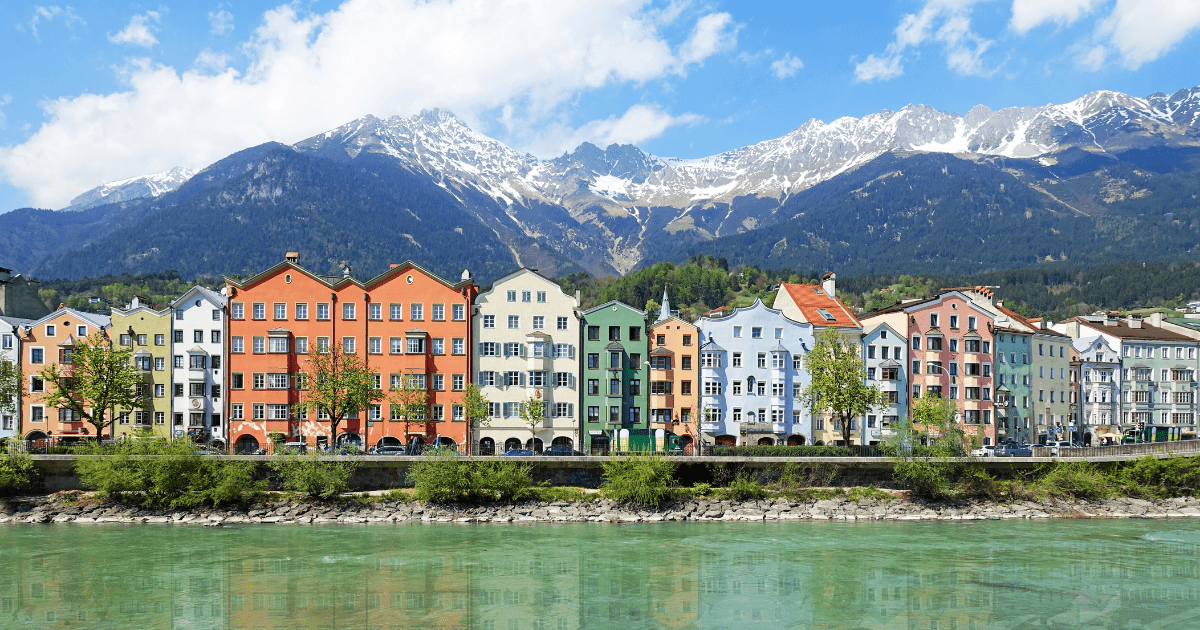European lakes and mountains holidays – where, why, what?
We're turning our attention to European lakes and mountains holidays in the Travel Club and heading to the Alps for new adventures and natural beauty.

Welcome to our European lakes and mountains holidays focus. We’re delighted to share this next chapter with you - this region is home to some of our most favourite places in the world and is just bursting with natural beauty, simple pleasures and new adventures.
So without further ado, here’s all you need to know about our focus on European lakes and mountains holidays

Where are we talking about?
Let’s start at the beginning – where do we mean when we say European lakes and mountains holidays? To begin with, it’s all about the Alps, the swathe of mountains that runs from France, through Switzerland and across the top of Italy and into Austria, reaching from the Rhône valley in the west to the Dolomites and Lake Garda in the south, Lake Constance and Salzburg in the north to Austria’s Slovenian border in the east.
We'll be branching out further beyond the Alps soon.
Technically, the Alps cover eight countries: France, Switzerland, Austria, Italy, Monaco, Liechtenstein, Germany and Slovenia – here, we’re mainly talking about the first four, simply because they’re the backbone of the Alps.
This is Europe’s largest mountain range, and is where you’ll find the highest peak in Europe – Mont Blanc, at 4,809m on the French Italian border, as well as the Matterhorn (on the Swiss Italian border) and the Eiger, in Switzerland.



Why should we visit?
The Alps were formed when the African and Eurasian tectonic plates slowly collided – really slowly, we’re talking over tens of millions of years – to create the stunning mountain ranges and deep valleys we know today.
And it’s this geography that makes the Alps such an attractive place to visit.
Water is at the heart of the Alps, whether it’s as snow covering the high peaks, frozen ice in huge prehistoric glaciers, or natural springs bubbling through the hillsides. Many of Europe’s major rivers start in the Alps – the Rhine, Rhône and Po – and the mineral-rich rivers, such as the Inn (which starts in the Engadine valley in Switzerland and flows through Innsbruck in Austria before joining the Danube) have long been celebrated for their health benefits.
Thermal springs, spa towns, fresh glacial pools, waterfalls, rushing rivers, tumbling streams, dramatic reservoirs, and lakes in all shapes, sizes and temperatures – water is rightly celebrated and central to this region.
And water is at the heart of our European lakes and mountains focus in the Girl About Travel Club. We could wax lyrical about it for hours – we love being in, on and around it.
Which is why we sent Ali, our Girl About the Lake District and wild swimming guide, to experience Austria’s nature first hand. You can read all about her trip here, she’ll be writing a couple more features too, and check out her Instagram for her utterly stunning photos from her visit.



How to get to the Alps?
The Alps are easy to reach from the UK, especially and perhaps surprisingly, by train. Take the Eurostar from London St Pancras and change in Paris for fast trains to the western side of the Alps (Lyon in France and Geneva in Switzerland). For travel to Austria, Munich is a handy gateway, while Milan is the major terminal for Italy.
To plan your trip by train, www.raileurope.com is a great website for timetables and booking multi-stage journeys across several countries. And for more info on travelling by train, visit www.seat61.com and www.snowcarbon.co.uk.
Our booking partner Charitable Travel works with Railbookers, who have an ever-increasing range of train travel options for holiday bookings.
It’s also worth looking at getting around by train once you’re there - many resorts have train stations, especially in Switzerland and Austria, and it’s a really relaxing way to travel, even with children.
BY PLANE
Lots of airports surround the Alps, and there are even a few smaller ones within the Alps, so direct flights from airports across the UK are plentiful.
To reach resorts in France, try Lyon, Grenoble and Geneva (just over the border in Switzerland). Chambéry is a smaller airport close to lakes Bourget and Annecy, and under two hours to many popular French resorts. It’s served by Jet2 and BA.
To reach Italy, Turin is best for the western side of the Alps (the Aosta Valley), while Milan is well placed for all of the Italian Alps. If you’re visiting the Italian Lakes, Verona or Venice are good options, and great to combine for a twin-centre holiday.
To reach Switzerland, Geneva and Zurich are the main hubs, and are exceptionally well connected to the rail network.
For Austria, Innsbruck airport is in the heart of the Tirol region (and also is a good airport for travelling through to the western side of the Dolomites too), or fly to Zurich in Switzerland or Munich in Germany. For the eastern side of Austria, the capital Vienna is well served by all major airlines.
BY CAR
It’s worth considering driving to the Alps. Take the ferry or Eurotunnel to Calais and some French resorts, such as Flaine and the Massif des Aravis, are the closest at about eight hours drive away. Service stations are better than in the UK, and the roads are generally quieter too.

What to expect when you’re there
It’s hard to generalise the Alps as each valley is distinct, let alone each country. You’ll find people living in, eg the Valle del Lys in Italy’s Aosta Valley region, who have never visited the neighbouring Val d’Ayas, even though as the crow flies they’re five miles apart, at most.
So while the overall theme in the mountains is healthy, outdoors experiences and hearty food, expect to find fiercely proud people with their own traditions, and their own flavours and recipes.
Every possible outdoors activity is available among the European lakes and mountains. In summer, walking and hiking are popular (and aided by cable cars), as are mountain biking, road biking, e-biking, climbing and horse riding.
Then there’s all the water sports. Wild swimming, normal swimming, SUP, kayaking, canyoning, white water rafting, wind surfing are all possible, as is simply paddling at lake-side beaches, and that’s before even talking about all the snowsports in winter.
And there are endless ways to connect with nature, such as yoga, forest bathing, herbal workshops and thermal spas.

Handy links list
Read more of my blogs and articles
CLICK HERE







